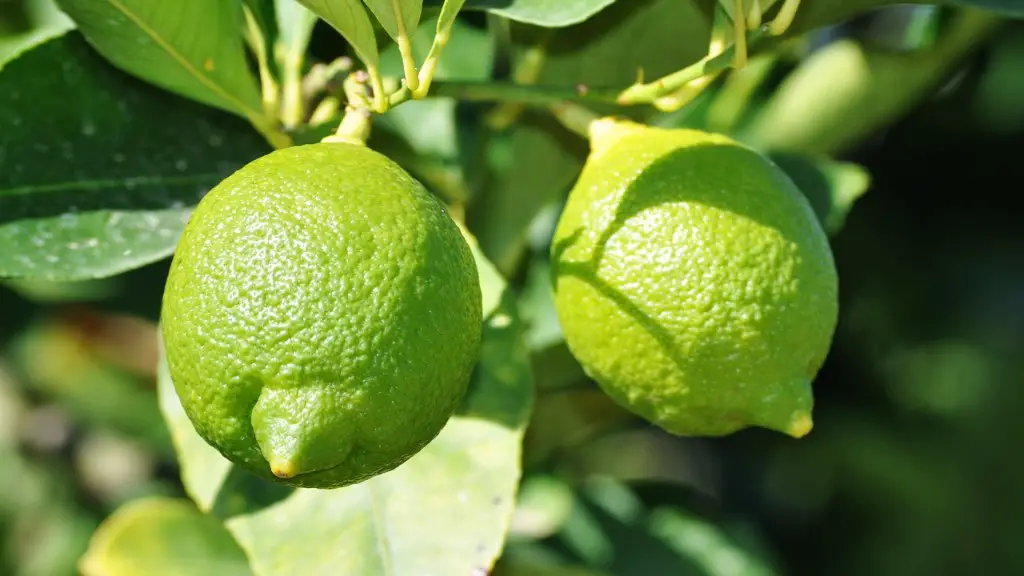When it comes to determining how cold a Meyer lemon tree can tolerate, there is no single answer as it depends on a variety of factors. Generally, these citrus trees can handle temperatures as low as temperatures of 25 to 28 °F (−3.9 to −2.2 °C), with brief exposure to 22 °F (−5.6 °C) being tolerated. They can still develop cold damage at 32 °F (0 °C), although it is not likely to be severe. A Meyer lemon tree will likely not survive temperatures that dip much lower than these, even for only a few hours.
Meyer Lemons are thought to have been developed in China as a hybrid of a mandarin orange, citron, and a true lemon. As a result, they are not quite as cold tolerant as a standard true lemon tree. Locations in the United States with cooler climates may need to take extra precautions year-round to a Meyer lemon tree from cold injury, or plant it in a sheltered location. These trees love to soak up the sun, however, tend to be more susceptible to cold injury.
One way of protecting your Meyer lemon tree from frost is to provide it with situational protection. You can accomplish this by covering it with a blanket and avoiding watering it the day before a frost. Wrapping the tree in a tarp or plastic sheeting before the cold weather is another way of protecting it. Be sure to uncover it early in the morning on frosty days, so that the sun can help to warm it up.
Fertilizing and mulching with organic matter will keep your Meyer lemon tree happy year round and help protect its roots from the cold weather. Mulch should be applied in early spring and again in late fall. In areas with near-freezing temperatures, regular pruning during the late fall and winter months can also help protect the branches, leaves, and fruit from cold temperatures.
Providing adequate irrigation is also an important part of protecting your Meyer lemon tree from the cold. During the winter months, the tree will not require as much water as in the summer months; however, it should still receive a weekly soaking to provide essential moisture for its survival. During cold spells, it may be beneficial to give your tree a deeper soaking to provide extra insulation.
In some cases, it may be beneficial to move your Meyer lemon tree indoors during periods of extreme cold. If that isn’t an option, there are a few other things you can do to protect your tree. For example, windbreaks and sheltered locations are important. Additionally, planting the Meyer lemon tree in a south-facing spot where the sun hits it directly can help to keep it warm and protect it from damaging freezing temperatures.
Cold Protection Strategies
When temperatures start to dip below freezing, it is important to take extra precautions to protect your Meyer Lemon tree from cold-related damage. In addition to measures such as covering the tree and avoiding watering the day before a frost, providing adequate fertilization, mulching with organic matter, and regular pruning, utilizing other cold protection strategies may come in handy. These may include moving the Meyer lemon tree indoors during periods of extreme weather, creating windbreaks, and planting the tree in a south-facing spot where the sun hits it directly.
Planting Meyer Lemon Trees
Given that Meyer lemon trees are not as cold tolerant as true lemon trees, it is important to connect with knowledgeable gardeners and local horticulturalists when looking to plant a Meyer lemon tree. They can provide information on climate concerns that they have encountered while growing different citrus trees, which can help you determine the best location for your Meyer lemon tree. Planting in colder climates below the frost line may require additional protection measures, such as the use of cold frames.
Frost Tolerance Levels
When determining frost tolerance levels for a Meyer lemon tree, various factors must be considered. While Meyer lemons can tolerate temperatures down to 25 to 28 °F (−3.9 to −2.2 °C) with brief exposure to 22 °F (−5.6 °C), cold damage can occur at temperatures as high as 32 °F (0 °C). With that being said, it is recommend that individuals living in cooler climates take extra precautions to protect their Meyer lemon tree from cold injury, or plant it in a sheltered location. Regularly checking the temperatures during cold spells and responding accordingly is also a must.
Harvesting Fruit from Meyer Lemon Trees
Depending on the climate, Meyer lemon trees may fruit as early as late fall or as late as summer. In mild climates, fruit can be ripened on the tree; in cold climates, however, the fruit should be picked when it is just beginning to ripen in order to protect it from cold weather. Bergamots, the sweet oranges and lemons with which Meyer lemons are related, are actually cold-hardy and some varieties can survive temperatures as low as 0 °F (−17.8 °C), while also producing a flavorful fruit. For this reason, some gardeners may opt for a bergamot instead of a Meyer lemon tree.
Pruning Meyer Lemon Trees
Pruning trees can produce healthier, more robust plants and actually increase the amount of fruit a Meyer lemon tree produces. Pruning, however, needs to be done with caution in colder climates. If done too late in the season, it can leave the tree vulnerable to cold temperatures. In areas with near-freezing temperatures, regular pruning during the late fall and winter months can help protect the branches, leaves, and fruit from cold temperatures. Pruning should always follow an overall plan and should remove dead, diseased, or broken branches first, followed by branches that are rubbing against each other and then shaping the tree.


